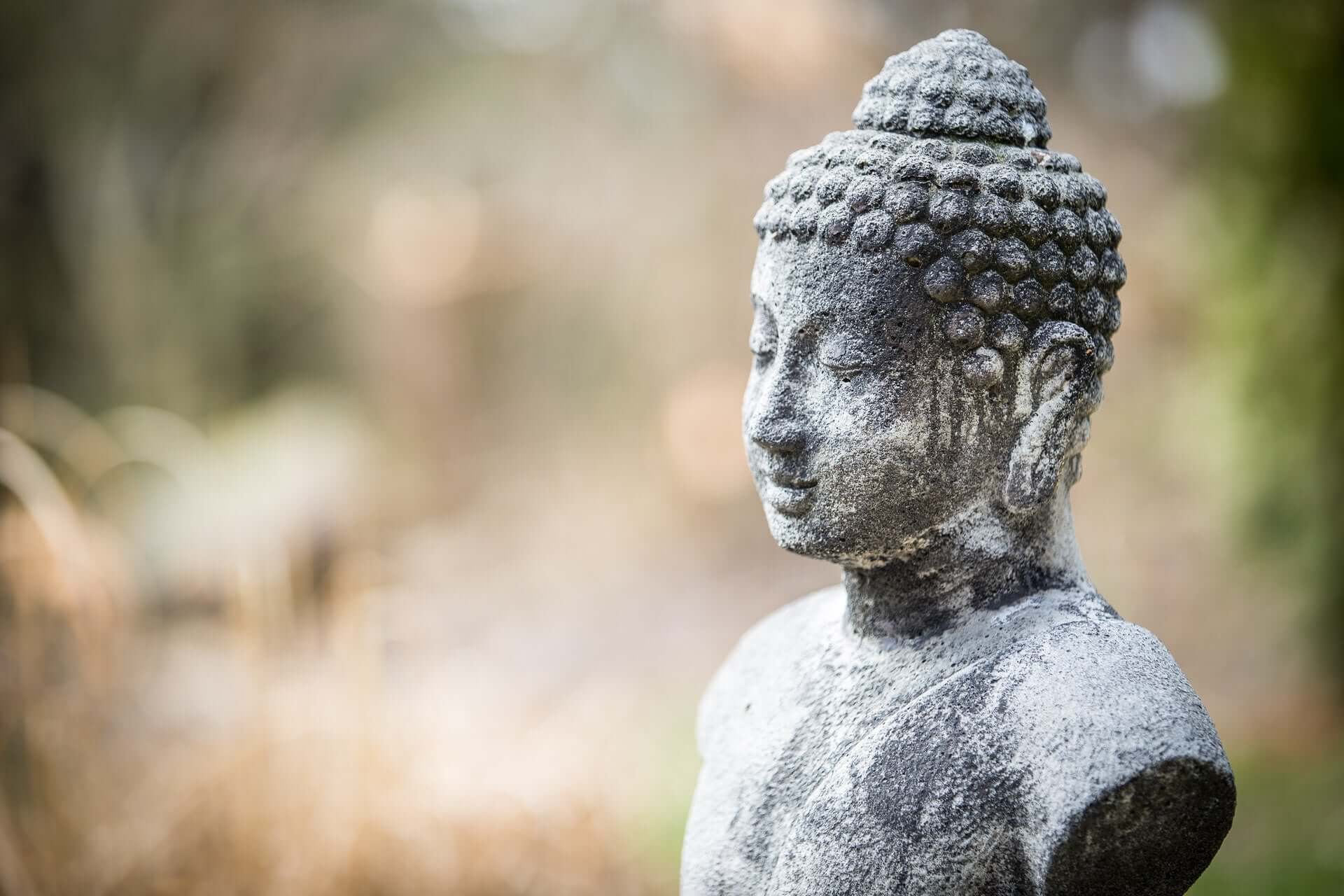
Table of contents
Zen – What does that actually mean?
We’ve all probably heard the word “Zen” before. There are Zen gardens, Zen Buddhism, and “Zen” is also understood as a kind of state of calm. But what does the term actually mean? I did some research and was surprised...
A hint from the universe?
I recently came across a book in my favorite bookstore that, once I looked at it, I couldn't put down. It's quite small, and the cover features an illustration in blue tones of a woman sitting on the shore of a lake. Mount Fuji can be seen in the background. The book is called “Zen – The Art of Simple Living” (English for example “Zen – The Art of Simple Life”), the author’s name is Shunmyo Masuno. A look at the blurb reveals that this book is intended to convey 100 practices and teachings of Zen Buddhism that can be easily transferred to everyday life and lead to more satisfaction. At the latest after I briefly leafed through the book and was totally impressed by the beautiful little illustrations inside, it was clear to me: “I have to take this with me!”
Why am I telling you this?
As I read the foreword, it occurred to me that although I have a general idea of what Zen is about, I have never seriously I thought about what Zen actually means. I was hooked and did a little research. Because I think that I am certainly not alone in this and it would be a shame not to retain the knowledge I have gained, I am now sharing it with you here in this post.

What does “Zen” stand for?
Zen is based on the Sanskrit word Dhyana back, which is as much as “State of meditative absorption" means. It first spread in the 5th century as a branch of Buddhism in China, so it already has a very long tradition. Soon a Korean and a Vietnamese interpretation also developed. However, what we primarily understand as Zen today goes back to the Japanese version of Zen. This only developed later, in the 12th century. So much for the conceptual and historical background of the word.
We can therefore say that Zen is not a uniform “teaching” but exists in different versions. Zen also has roots in Buddhism; However, it is not to be understood as a religious movement and can therefore be experienced by anyone who deals with it.
It is often said that there is no real teaching behind Zen. Zen also does not contain any special wisdom. On the contrary, Zen ultimately offers “nothing". What does that mean? So doesn't Zen actually have any meaning?
Yes, sure! Because this view fits very well with our current understanding of meditation, the “Do nothing”.
Which brings us to a central point of Zen:
How is Zen practiced?
The Sitting meditation, here "Zazen", is one of the central practices in Zen. The Japanese term Zazen means something like "sitting in absorption". The sitting posture is typical: crossed legs, an upright back, half-open eyes and thumbs gently touching in the lap. Just as we know it from decorative Buddha statues. But here too, there are of course some variations of this position.
Sitting meditation is not about having enlightenment (which can also happen in Zen). Rather, it should Focus on the present be turned around without giving it any thought. The mind should find peace. In Zen it is believed that overcoming “self-consciousness” leads back to our original nature and thus to our “normal state”. Sitting meditation is said to have a positive effect on the mind and body.
But also the concentration on the Everyday plays a large role in Zen practice. The mind should not only find peace in meditation. The “flood of thoughts” should also be contained in everyday life by completely concentrating on the activities that you are carrying out at the moment.
What is Zen about, what is the goal?
Zen is supposed to be one new perspective on yourself, your everyday life and the world. This is achieved by being present in the present moment. The sometimes sudden experience of universal unity is sometimes referred to as “enlightenment” or “becoming a Buddha,” even though this is not the goal of Zen.
So basically it's about going beyond the usual, categorizing thinking, into “not thinking”.
Masuno writes in the book mentioned at the beginning (loosely translated from English): “Zen gives suggestions and advice on habits and ideas surrounding a happy life”. Furthermore, four sentences play a central role in Zen: Spiritual awakening is conveyed outside of a teaching, it cannot be conveyed through words or texts, Zen is aimed directly at the human spirit and Zen enables one to return to one's own original nature. To put it more simply: It's not about sticking to scriptures or the taught word, but rather about meeting yourself in the here and now, just as you are. According to Masuno, the “Zen style” is to live an incredibly simple life, freed from meaningless things, from unnecessary worries and without the influence of other people’s values: “The answers you seek are within”. 😌
If you would like to learn more about mindfulness, healthy eating, sustainability or family and pregnancy, Check out more exciting blog articles on these topics here.

Photo by Faye Cornish on Unsplash




























3 Comments
und ich las: Zen wanderte – blieb stehen, nahm eine Sandale von seinem Fuß, legte sie auf seinen Kopf und wanderte weiter seines Weges.
H.K.-U. de Stelter z.H.
Ein interessanter Beitrag mit leicht verständlicher Erklärung, sehr anschaulich gemacht!
Das Seiende ist in unserem Geist; Interesse heißt: außerhalb des Seins – inter Esse.
Jörg Hildebrandt
Spannend! Vielen Dank :)
Ma
Leave a comment
This site is protected by hCaptcha and the hCaptcha Privacy Policy and Terms of Service apply.